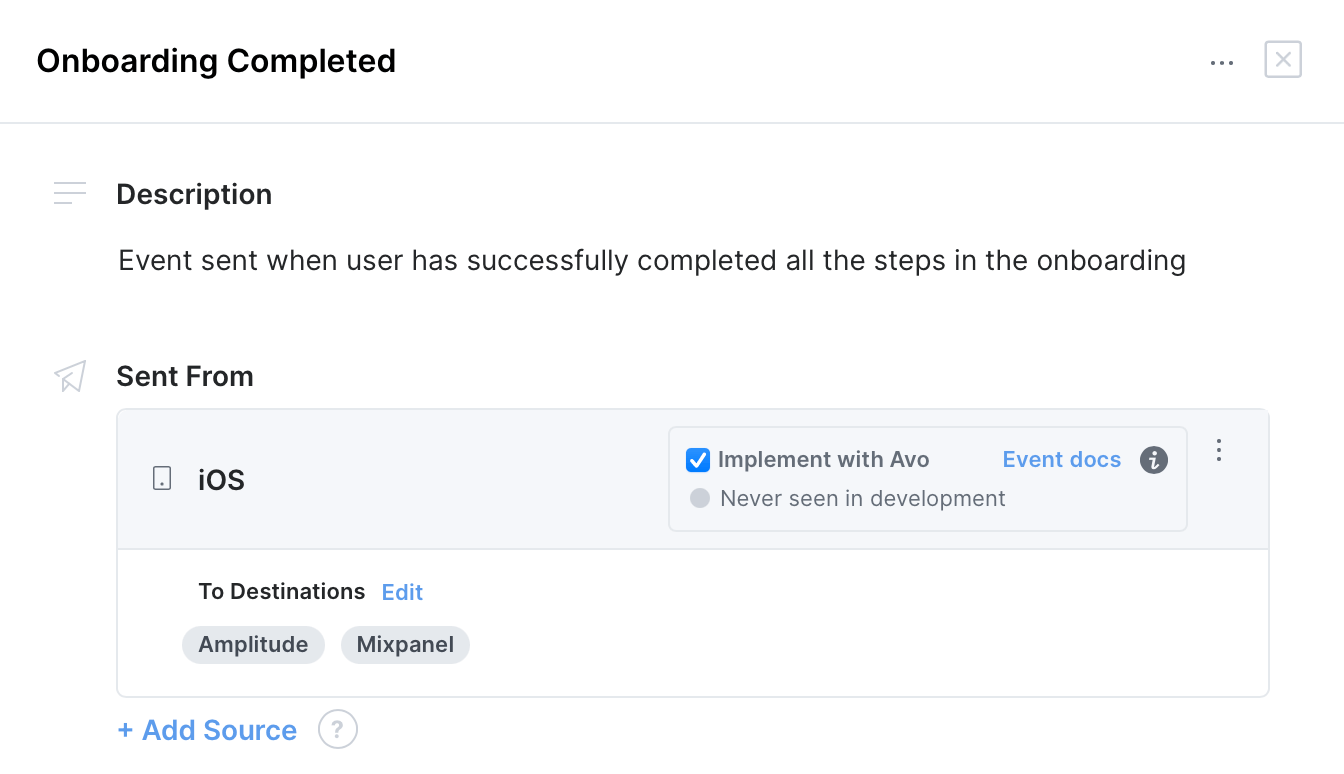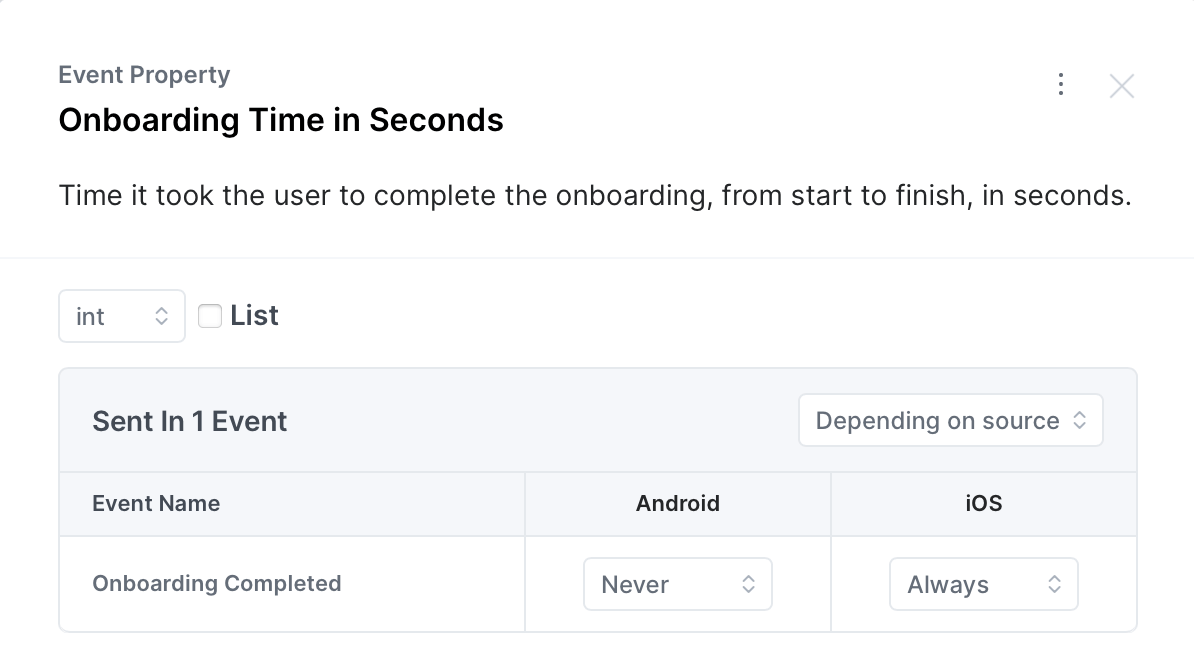Using Avo in large development teams with parallel workflows
In this doc we’ll cover how you can use Avo in large development teams, where multiple teams are working on multiple conflicting analytics changes in parallel, across multiple platforms.
Workflow example
Let’s look at an example. In our fictional company we have two development teams, iOS and Android. Even though the iOS and Android teams have an almost identical long-term product roadmap, they don’t work on the same features at the same time. In addition to that, each platform team can also be working on multiple features at the same time. This means there are always multiple analytics tracking changes happening in the company simultaneously.
How does that work in Avo, where there is a single tracking plan shared across the entire company, and directly connected to each codebase with Avo Codegen to ensure a single source of truth?
Avo branches
Developers have been using branches in Git to work on multiple code changes simultaneously for almost 20 years. In Avo you can use branches too, to work on multiple tracking plan changes simultaneously, both when designing your tracking plan and when implementing the tracking in code.
Let’s say the iOS team at our fictional company is working on an updated checkout flow. As part of this work they’ll need to add new events to their tracking plan and add properties to some existing events. They are also going to implement the tracking plan changes in code using Avo Codegen.
Branched tracking plan changes
First, they open a new branch in their Avo tracking plan, where they can modify the tracking plan without changing it for anyone else. They create the new events, and mark them to be sent from the iOS source. They add the new properties to the existing events and mark the properties to be always sent on iOS.

Onboarding flow event in Avo, sent from iOS

Property always sent from iOS, never from Android
Branched tracking plan implementation
When the tracking plan changes made on the branch have been peer-reviewed and approved in Avo, they can start the tracking implementation.
Using the Avo CLI the iOS developer can pull their type-safe generated Avo code based on the tracking plan from the Avo branch, into their feature branch on git: avo pull new-onboarding-events where new-onboarding-events is the Avo branch containing the Tracking Plan changes. By doing so, they’ve pinned the avo.json file in their project to the current state of the Tracking Plan on that Avo branch.
avo statususes the Tracking Plan version defined inavo.jsonto verify everything is implemented. That meansavo statusdoesn’t break if changes are made to your Tracking Plan that haven’t been pulled into code.
Once the tracking has been implemented, and the feature is ready to go, the developer gets their git branch merged like they usually would. As soon as the git branch is merged into the git main branch, they merge their Avo branch in the Avo main branch. By doing so, the main branch in Avo always represents the current state of the Avo tracking plan, while the tracking plan implementation stays pinned to the branch we just implemented. The avo.json file still points to the head of the Avo branch they just implemented, since that’s the version of the Tracking Plan the most recent tracking implementation was based on.
When it’s time for the Android team to implement the same changes, they would go through the same flow, but instead of creating the events and properties in Avo, they would only need to add the Android source to the events they want to implement, set the properties to be always sent from Android and run avo pull [--branch my-branch] [SourceName] from their Avo branch to implement the tracking changes.
Previously merged Avo branches can always be viewed back in time. That means you can always see the state of your tracking plan at that point, what changes were made when, and by whom.
Branched tracking plan changes and implementation within one platform
In the example above we were looking at teams working on iOS and Android. The exact same could apply for two or more teams working in parallel on tracking changes for a single platform, where each team would have their own Avo branch to work on, and would eventually merge their tracking implementations in git.
Workflow summary
When changes are made in the Avo Tracking Plan:
- Open an Avo branch and make your Tracking Plan changes
- Get a peer-review and approval on the changes
- Implement the changes from the Avo branch in your code on a git branch
- Merge the git branch
- Merge the Avo branch
- Details on what changes were introduced on the Avo branch remain available for future reference
FAQs
Should the Avo generated code and the avo.json file be checked into git?
Yes, the generated code from Avo as well as avo.json should be checked into your source control. With the avo.json file checked in, the source code is always pinned to a certain point in time of the Tracking Plan and the Avo CLI configuration is automatically shared within your team. The Avo generated file is also checked in to git just like any other code in your project.
Do I need to manually resolve git conflicts in the Avo generated code and avo.json?
No, if you have git conflicts in any Avo related files (Avo generated code or avo.json), run avo pull and the Avo CLI will take care of resolving the conflicts automatically. Learn more in the CLI documentation.
The avo.json on my git main branch is pointing to an Avo branch that has already been merged, is that expected?
Yes, that is expected! The Avo CLI uses this information to verify that the Avo branch has been merged, for example when automatically resolving git merge conflicts. It’s also a documentation for which version of the Tracking Plan was used for the most recent tracking plan implementation for this source. The Avo CLI will take care of automatically updating avo.json on next avo pull, pinning it to the new Avo branch you’re pulling from.
What if one source is done with their Avo implementation before the other sources on that branch?
If one of the sources completes their implementation ahead of the other sources, and are merging that implementation in the main git branch, we recommend merging only that source into your Avo main branch. Read more about how to manage branches with multiple sources to keep your Avo main branch in sync with your git main branch.